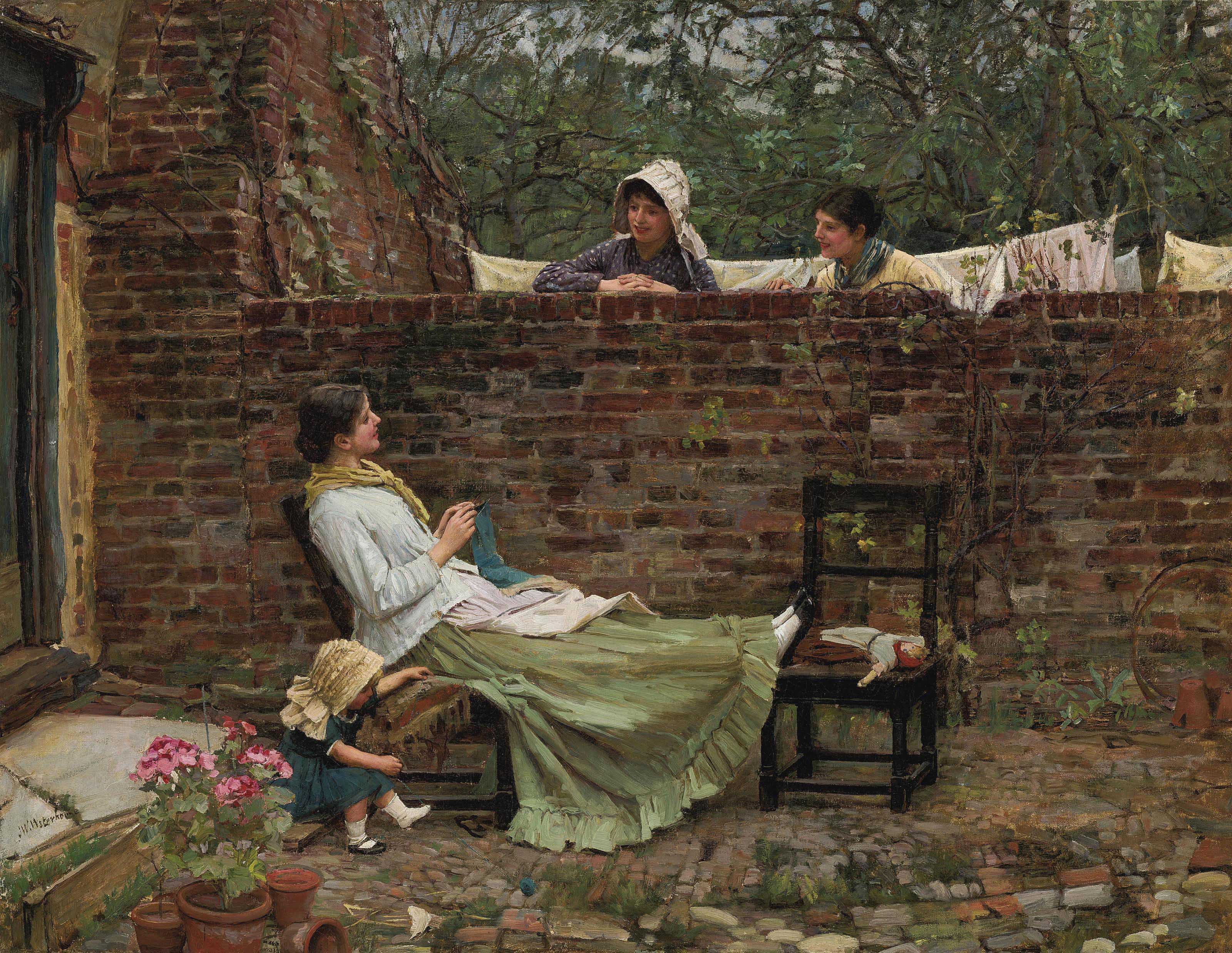|
The Crystal Ball (painting)
''The Crystal Ball'' is a painting by John William Waterhouse completed in 1902. Waterhouse displayed both it and '' The Missal'' in the Royal Academy of 1902. The painting shows the influence of the Italian Renaissance with vertical and horizontal lines, along with circles "rather than the pointed arches of the Gothic".Hobson, Anthony. 1989. ''J. W. Waterhouse''. Oxford: Phaidon Christie's. p. 81. Part of a private collection,Noakes, Aubrey. 2004. ''Waterhouse: John William Waterhouse''. London: Chaucer Press. p. 76. the painting has been restored to show the skull which had been covered by a previous owner. See also * List of paintings by John William Waterhouse References 1902 paintings Paintings by John William Waterhouse Books in art Skulls in art Witches in art {{20C-painting-stub ... [...More Info...] [...Related Items...] OR: [Wikipedia] [Google] [Baidu] |
John William Waterhouse
John William Waterhouse (6 April 184910 February 1917) was an English painter known for working first in the Academic style and for then embracing the Pre-Raphaelite Brotherhood's style and subject matter. His artworks were known for their depictions of women from both ancient Greek mythology and Arthurian legend. Born in Rome to English parents who were both painters, Waterhouse later moved to London, where he enrolled in the Royal Academy of Art. He soon began exhibiting at their annual summer exhibitions, focusing on the creation of large canvas works depicting scenes from the daily life and mythology of ancient Greece. Many of his paintings are based on authors such as Homer, Ovid, Shakespeare, Tennyson, or Keats. Waterhouse's work is displayed in many major art museums and galleries, and the Royal Academy of Art organised a major retrospective of his work in 2009. Biography Early life Waterhouse was born in the city of Rome to English painters William and Isabella W ... [...More Info...] [...Related Items...] OR: [Wikipedia] [Google] [Baidu] |
Oil Painting
Oil painting is the process of painting with pigments with a medium of drying oil as the binder. It has been the most common technique for artistic painting on wood panel or canvas for several centuries, spreading from Europe to the rest of the world. The advantages of oil for painting images include "greater flexibility, richer and denser colour, the use of layers, and a wider range from light to dark". But the process is slower, especially when one layer of paint needs to be allowed to dry before another is applied. The oldest known oil paintings were created by Buddhist artists in Afghanistan and date back to the 7th century AD. The technique of binding pigments in oil was later brought to Europe in the 15th century, about 900 years later. The adoption of oil paint by Europeans began with Early Netherlandish painting in Northern Europe, and by the height of the Renaissance, oil painting techniques had almost completely replaced the use of tempera paints in the majority ... [...More Info...] [...Related Items...] OR: [Wikipedia] [Google] [Baidu] |
The Missal
''The'' () is a grammatical article in English, denoting persons or things already mentioned, under discussion, implied or otherwise presumed familiar to listeners, readers, or speakers. It is the definite article in English. ''The'' is the most frequently used word in the English language; studies and analyses of texts have found it to account for seven percent of all printed English-language words. It is derived from gendered articles in Old English which combined in Middle English and now has a single form used with pronouns of any gender. The word can be used with both singular and plural nouns, and with a noun that starts with any letter. This is different from many other languages, which have different forms of the definite article for different genders or numbers. Pronunciation In most dialects, "the" is pronounced as (with the voiced dental fricative followed by a schwa) when followed by a consonant sound, and as (homophone of pronoun ''thee'') when followed by a ... [...More Info...] [...Related Items...] OR: [Wikipedia] [Google] [Baidu] |


.png)